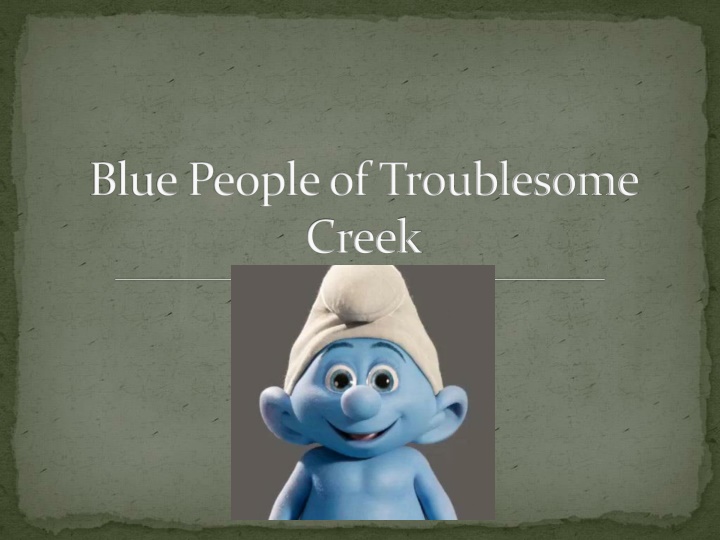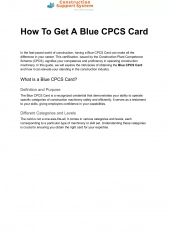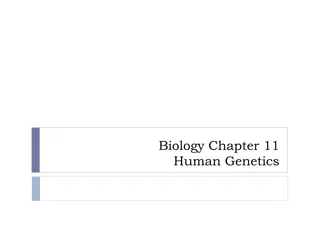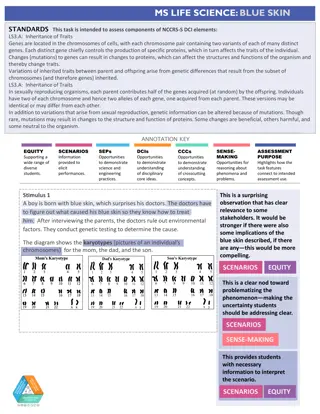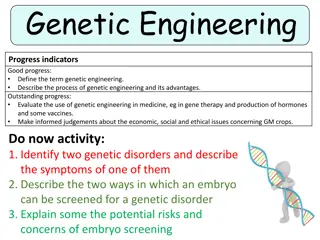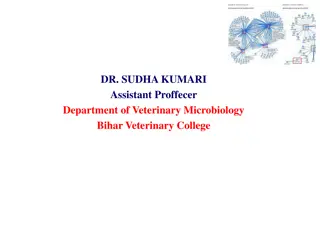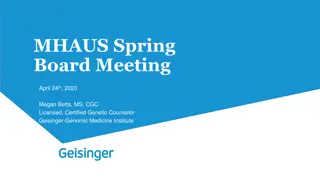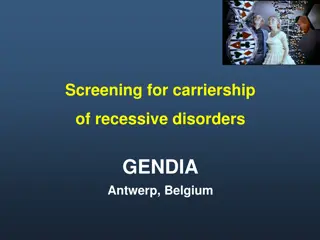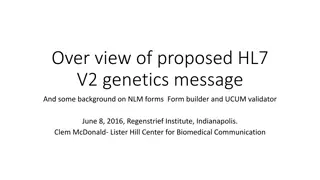Blue People of Troublesome Creek: An Unusual Genetic Tale
In a secluded town of Troublesome Creek, Kentucky, a French orphan named Martin Fugate settled in 1820 with a rare blue skin disorder. This genetic anomaly, known as Methemoglobinemia, is an autosomal recessive disorder that affects the blood's oxygen-carrying capacity. Due to geographic isolation, the recessive trait persisted through generations as the Fugates intermarried, leading to the inheritance of the unique characteristic. Explore how Punnett Squares and pedigrees illustrate the inheritance of genetic traits and the role of carriers in passing on recessive alleles.
Download Presentation

Please find below an Image/Link to download the presentation.
The content on the website is provided AS IS for your information and personal use only. It may not be sold, licensed, or shared on other websites without obtaining consent from the author.If you encounter any issues during the download, it is possible that the publisher has removed the file from their server.
You are allowed to download the files provided on this website for personal or commercial use, subject to the condition that they are used lawfully. All files are the property of their respective owners.
The content on the website is provided AS IS for your information and personal use only. It may not be sold, licensed, or shared on other websites without obtaining consent from the author.
E N D
Presentation Transcript
MartinFugate French orphan who came to America in 1820 and settled in an area known has Troublesome Creek, Kentucky According to family written records he had blue tinted skin For over the next 100 years Martin s skin disorder was passed on through his descendants. One of Martin s sons married his maternal aunt and 100 years later Benjy Stacey was born (1975).
Methemoglobinemia AUTOSOMAL RECESSIVE genetic disorder resulting in an abnormal amount of methemoglobin in the blood Methemoglobin is a form of hemoglobin that can t carry oxygen and effects normal hemoglobin from release it s oxygen to the parts of the body Methemoglobin Concentration % Total Hemoglobin Symptoms <1.5 g/dl 10% None 1.5-3.0 g/dl 10-20% Cyanotic Skin Discoloration 3.0-4.5 g/dl 20-30% Anxiety, lightheadedness, headache 4.5-7.5 g/dl 30-50% Fatigue, confusion, dizziness 7.5-10.5 g/dl 50-70% Coma, seizures, arrhythmias, acidosis > 10.5 g/dl >70% Death
How does the recessive trait continually get passed on? GEOGRAPHIC ISOLATION The Fugates along with a couple other families were isolated in Troublesome Creek, Kentucky. When the town was settled there were no roads, making it hard to get out. Result of this was that people tended to intermarry. By LUCK one of the other 2 families in the isolated town carried an allele for methemoglobinemia
PunnettSquares VS. Pedigrees Shows the probability of potential offspring between parents Representation of a family tree that shows the inheritance of a genetic trait through generations
How to Read a Pedigree Key Homozygous Dominant Male Homozygous Recessive Male Heterozygous Male (Carrier) Homozygous Dominant Female Homozygous Recessive Female Heterozygous Female (Carrier) Parents Parents are related to each other A person that is HETEROZYGOUS for a trait is known as a CARRIER Offspring
A CARRIER A person that receives a recessive allele for a genetic trait or disorder, but doesn t display or show the trait themselves.
